One of the greatest advantages of digital advertising is its ability to allow advertisers to measure performance. In the digital world, actions even as small as a single click could be tracked. Social media giants like Facebook have taken full advantage of this ability to create platforms where advertisers have extensive knowledge of how their selected audience responds to their ads. To better help assess ad performance, Facebook assigns a relevance score to every ad that indicates how successful it is compared to other ads competing for the same audience. Bear with us to find out how you could improve this quality ranking of your Facebook Ads to grow revenue and save costs.

Before 2019, Facebook used to provide advertisers with only one indicator of how well their ads resonate with the audience. This score, ranging from 1 to 10, was called Ad Relevance Score. The metric assessed how much an ad’s target audience finds it relevant based on their feedback.
However, the relevance score wasn’t very helpful. It didn’t tell you where exactly your ad is not performing and how you could improve it. The only thing you got was a number which was only good for knowing how far behind (or ahead) your ad is compared to other ones quality-wise. There was no way to know if the problem was with the ad itself, the selected target audience, or the post-click experience.

All of this is changed now thanks to the shift to a new, more detailed ranking system. Known as the Ad Relevance Diagnostics, this system no longer relies on a single, vague score and breaks down how your ad is competing against ones with a similar audience into three understandable areas.
What’s good about Ad Relevance Diagnostics is that you have much clearer guidance on how you could improve your ads. In recent years, Facebook has put heavy emphasis on displaying relevant, valuable content to its users and providing an undisrupted experience for them. The new ranking system plays a huge role in the company’s efforts. It gives advertisers way better direction on how they could boost the quality of their ads so that more users engage with them. It’s really a win-win game for all sides; Users are less disturbed by irrelevant and low-quality ads, advertisers save more costs, and Facebook gets better user and client satisfaction.
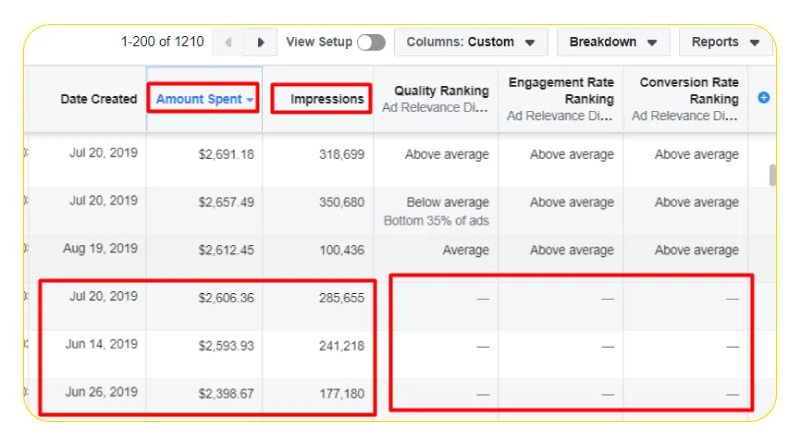
Understanding the Three Components of Quality Ranking
When it comes to mastering the art of Facebook advertising, there’s an intricate dance that takes place behind the scenes—a dance that determines whether your ad will take center stage or fade into the shadows. This hidden choreography is none other than the Facebook Ads Quality Ranking, a multi-faceted evaluation that separates the showstoppers from the wallflowers.
Let’s draw back the curtains and illuminate the three crucial components that constitute this ranking, revealing the essence of captivating ads that resonate with your audience.
Quality: Unveiling the Artistry within Advertisements
Imagine your ad as a piece of art that viewers encounter while strolling through a gallery. Just as some pieces catch the eye and elicit whispers of admiration, Facebook’s Quality component measures your ad’s perceived brilliance based on the echoes of user feedback and the harmony of engagement metrics.
High-quality ads are like masterpieces that forge connections. Positive feedback from users—expressed through likes, shares, and meaningful interactions—paints a vivid picture of engagement. The more users resonate with your ad, the more it’s seen as a masterpiece in the eyes of Facebook’s algorithms.
Engagement Rate Ranking: The Dance of Interaction
Every ad is a participant in a grand ballroom of ads, each vying for attention, applause, and admiration. Engagement Rate Ranking is the conductor of this elegant dance, determining how gracefully your ad twirls in comparison to others. It examines the anticipated engagement rate of your ad and aligns it with the rhythm of the ad landscape.
Imagine your ad waltzing into the spotlight with confidence, outshining its counterparts by sparking conversations, captivating clicks, and evoking emotions. This ranking elevates the most charismatic ads to the center stage, ensuring that they’re seen and appreciated by a captivated audience.
Conversion Rate Ranking: Transforming Interest into Action
If Engagement Rate Ranking is the dance, then Conversion Rate Ranking is the transformation—the enchanting moment when intrigue turns into action. This component delves into your ad’s ability to wield its influence, measuring how well it persuades viewers to take the desired steps, whether it’s signing up, purchasing, or exploring further.
Consider your ad as a storyteller with the power to guide viewers through a narrative that culminates in a satisfying conclusion. A high Conversion Rate Ranking tells the tale of an ad that inspires its audience to not only applaud but also step into the spotlight by converting curiosity into commitment.
In essence, these three components—the nuanced brushstrokes of Quality, the elegant choreography of Engagement Rate Ranking, and the magical conversion spell of Conversion Rate Ranking—compose the symphony that resonates within Facebook’s Ads Quality Ranking. By mastering this harmonious composition, you’ll craft ads that don’t merely interrupt but enrapture, leaving an indelible mark on the audience’s hearts and minds.
How does the Ad Relevance Diagnostics work?
Facebook’s Ad Relevance Diagnostics measures how your ad performs across three dimensions of relevance:
- Quality Ranking: How your ad’s perceived quality compared to ads competing for the same audience.
- Engagement Rate Ranking: How your ad’s expected engagement rate compared to ads competing for the same audience.
- Conversion Rate Ranking: How your ad’s expected conversion rate compared to ads with the same optimization goal competing for the same audience.
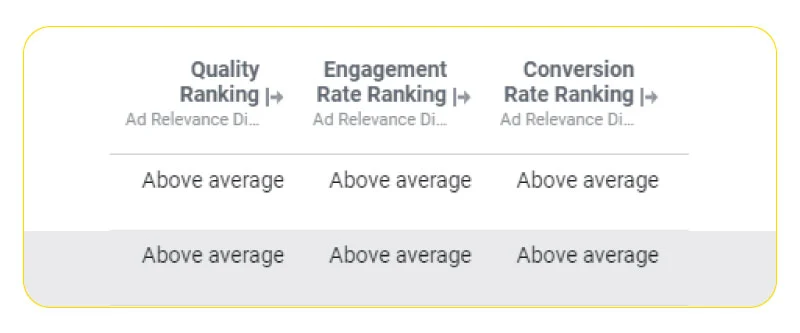
These diagnostics have replaced the Ad Relevance Score in the Performance column in Facebook Ads Manager. Instead of a single estimate between 1 to 10, Facebook gives one of these five values to your ad for each ranking:
- Above Average
- Average
- Below Average (Bottom 35% of ads)
- Below Average (Bottom 20% of ads)
- Below Average (Bottom 10% of ads)
Similar to the relevance score, these ranks are given to an ad after it gains 500 impressions. The higher rank you get in each metric, the lower your cost-per-click will be. Having an ad with good performance in each area also results in higher click-through rates and ultimately, more ROI.
How to use Ad Relevance Diagnostics
Before getting to the ways you could improve your rankings, there’s an important thing you should know: Ad Relevance Rankings are NOT always 100% accurate. If your ads have Below Average scores in any of the three areas but are generating your desired results, there’s no need to make changes. As Facebook puts it, “High relevance is correlated with high performance, but it’s not always the reason for high performance.”

Another important thing to consider is the diagnostics you need to focus on. Improving an ad’s ranking from Below Average to Average is much more impactful than moving up from Average to Above Average.
Thankfully, Facebook has created a handy guide on using diagnostics to improve your ad performance. Here it goes:
If your ad has received a Below Average Quality Ranking but Average Engagement Rate and Conversion Rate rankings or above:
This assessment means that the quality of your ad is perceived as low by viewers, even though you’ve chosen the right audience that is already interacting with it. To improve performance, you should tweak ad copy and creative or include audiences that are more likely to find your ad high-quality.
If your ad has received a Below Average Conversion Rate Ranking but Average Quality and Engagement Rate rankings or above:
The ad is not producing the conversions you’re bidding on. In other words, users may like your ad and even engage with it, but they don’t take the actions you want after clicking on your ad. You need to find a way to entice them to take that action by improving your CTA or landing page experience. Another solution would be targeting people who are more likely to convert. Bear in mind that some products like jewelry naturally achieve lower conversion rates, so make sure to check your business goals before applying any changes.
If your ad has received a Below Average Engagement Rate Ranking but Average Quality and Conversion Rate rankings or above:
Your ad is not spurring enough interest and the audience is not interacting with it. To put it simply, the audience you reach with your ad doesn’t find it relevant. You either have to target a different audience or tweak your ad to make it more engaging.
How to improve Facebook Ads Quality Ranking
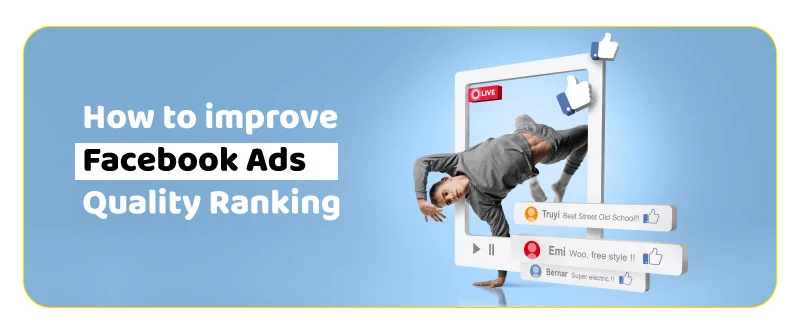
Here are some proven practices to get higher relevance rankings with your Facebook ads:
Create a comprehensive Facebook advertising strategy
Having a robust Facebook Ads strategy is a prerequisite for any business looking to adopt the platform in its marketing efforts. Advertising on Facebook isn’t just creating some ads with attention-grabbing images and big words in captions and display to the largest target audience possible.
You need to develop a well-thought-out plan based on your potential customer’s characteristics, a marketing funnel, and the goals you wish to achieve. To learn how to create a strong strategy, read our article on how to develop a complete Facebook Ads strategy in 2024.
Avoid low-quality ad attributes
Some key factors are considered low-quality by Facebook. Incorporating any one of them in your ad will result in lower relevance rankings and higher CPC. In the case of excessive use, Facebook will associate your page with lower-quality content by default and significantly decrease your chances in ad auctions or reject your ads altogether. These attributes include:
- Withholding information: Enticing viewers to click a link to understand the full context of the ad
- Sensationalized language: Using exaggerated headlines or commanding a reaction from the viewer to a degree that creates an unexpected post-click experience
- Engagement bait: Using click-baity content that urges the viewer to engage with the ad in an inauthentic way with the purpose of getting more likes, comments, and shares
Avoid low-quality post-click experience attributes
Post-click experience is all about what the user would go through after clicking on your Facebook ad. Whether you direct your audience to a dedicated landing page or to a website, you must avoid these attributes:
- Lack substantive or original content
- Disproportionate volume of ads relative to content
- Pop-up ads or interstitial ads
- Unexpected content experiences
- Misleading experiences Use video ads

It is believed that users spend five times longer on video ads than on static ads. The video format grabs attention easier and gives you much more room to convey your message. You can clearly explain why your product is superior compared to competitors and bring more value to your promotional content. Make sure to get to the point in the first few seconds and include a clear CTA at the end of the video so you won’t leave interested viewers high and dry.
Work on your ad schedule
Depending on the locations you’re targeting with your campaign, make sure to run your ads during the time in which your target audience is more active. Scheduling your ads thoughtfully would increase exposure. Head over to your analytics to find out at what times of the day your intended audience engages more with your content and refine your schedule. Also, try to optimize your ad frequency. Overexposing your audience would result in ad fatigue and significantly hurts performance.
Don’t sleep on testing
As Facebook beautifully puts it, “rather than seek the ideal creative or the ideal targeting, seek the ideal creative/targeting fit.” Discovering this optimal combination is only possible through extensive A/B testing. It’s the best way to learn what formats, copies, CTAs, and every other ad component works and what doesn’t. Once you come up with a number of working combinations, it’s time to iterate.
Get help from an ad spy tool
If you’re having a hard time figuring out how to adjust your ad’s targeting, copy, and creative, it’s always a good idea to get inspiration from successful players. A competent Facebook ad spy tool would make this very easy. For instance, with AdFlex, you can search through the ads of other advertisers in your niche, find the ones that have achieved the best results, and see what makes them winners.
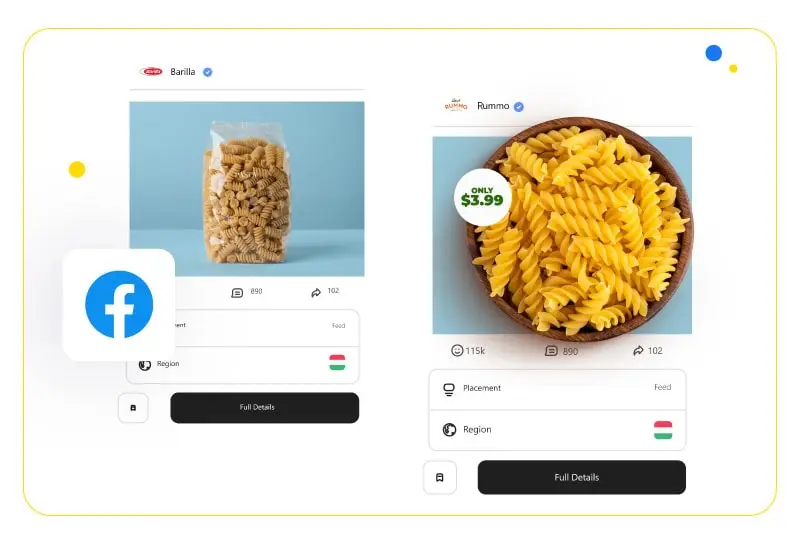
Conclusion
Facebook’s new ad ranking system is super useful for finding out where exactly your ads are underperforming. By sticking to the platform’s clear guidelines and taking advantage of the tips we just gave you, getting high ranks in Ad Relevance Diagnostics becomes a piece of cake. This way, not only your ads will be considered high-quality in the eyes of Facebook, but also achieve higher click-through and conversion rates.
FAQs
How does Facebook rank ads?
Facebook uses a system called Ad Relevance Diagnostics that measures ads performance across three relevance dimensions: Quality, Engagement Rate, and Conversion Rate. Each ad is given one of these values based on its performance: Above Average, Average, Below Average (Bottom 35% of ads), Below Average (Bottom 20% of ads, and Below Average (Bottom 10% of ads).
What is Facebook Ad Relevance Score?
Ad Relevance Score was Facebook’s previous ad ranking score. It gave each ad a score between 1 to 10 based on its performance. This system was replaced by the more detailed Ad Relevance Diagnostics in 2019.
What is a good quality ranking for Facebook ads?
The highest score you can achieve with your ad in the Ad Relevance Diagnostics is “Above Average”, which means your ad is performing well against other ads that are competing for the same audience. You can improve your ranking by using high-quality creative assets, compelling ad copies, and timing your campaign well. Avoiding low-quality attributes like click-batey content and poor post-click experience will also help your ranking.
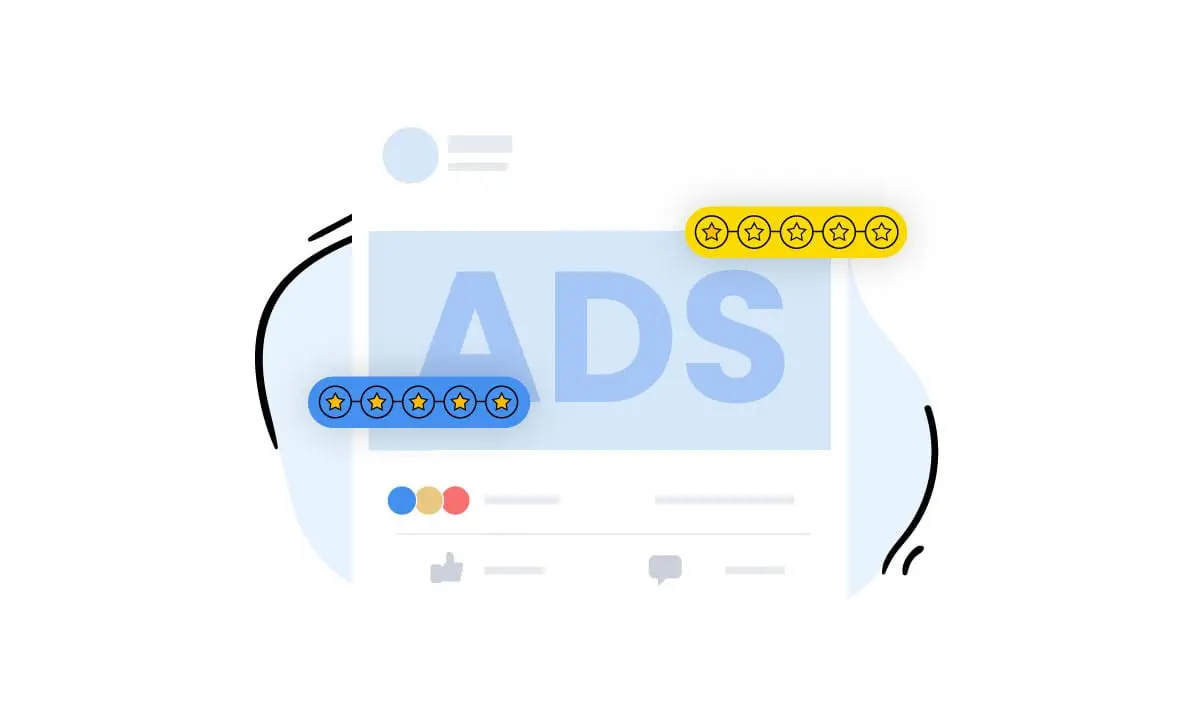


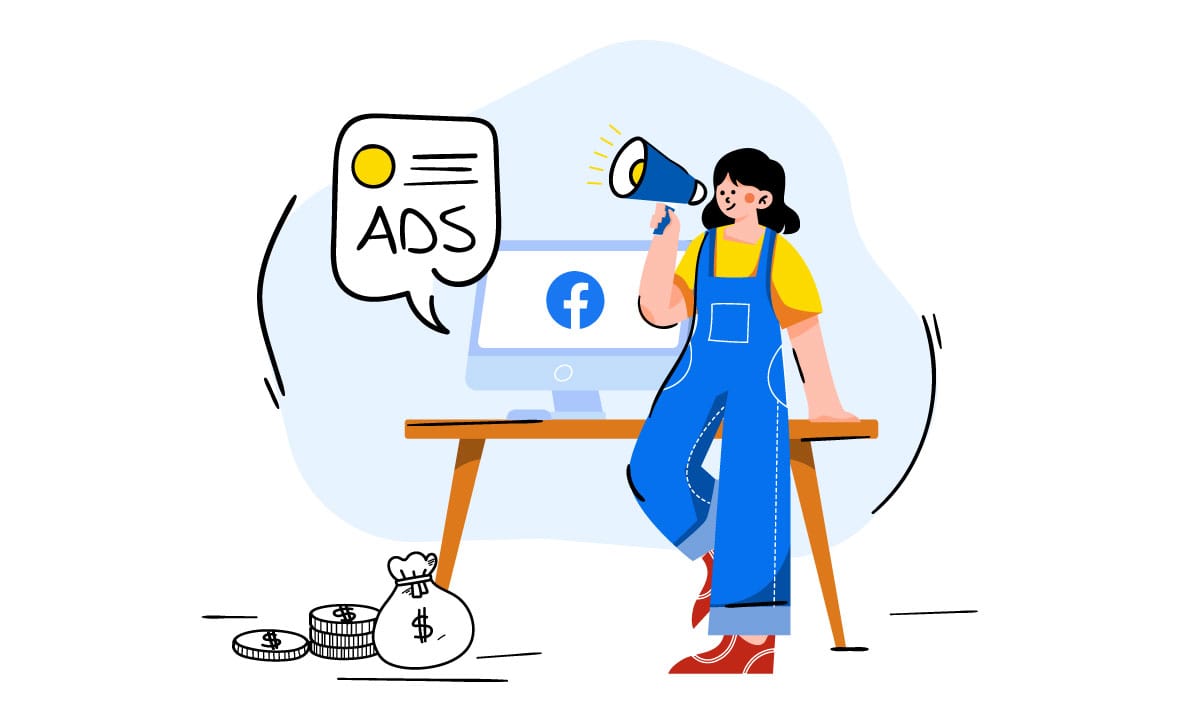



 Facebook Ads Spy Tool
Facebook Ads Spy Tool TikTok Ads Spy Tool
TikTok Ads Spy Tool